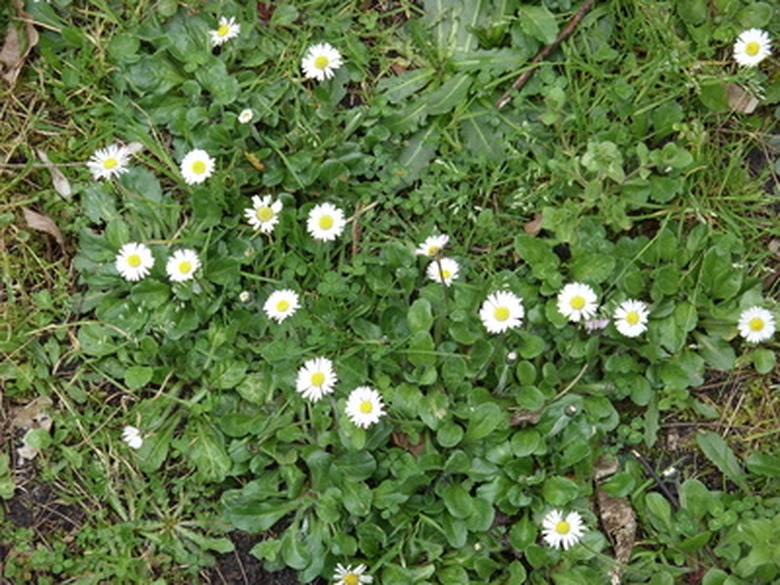Weeds That Grow In St. Augustine Grass
St. Augustine grass grows as a warm season perennial grass in the southern United States and along the Gulf Coast and in Southern California. This broadleaf, course-textured grass tolerates partial shade and a wide range of soil conditions. A healthy stand of St. Augustine usually chokes out most weeds that try to invade during its growing season. However in the late fall and winter, when St. Augustine is dormant, grassy and broadleaf weeds find fertile ground.
Henbit
Henbit is a winter annual broadleaf weed. It is a member of the mint family reproducing by seeds and root stems. The plant's leaves have rounded-tooth edges and are generally oval shaped. The leaves are opposite from one another along the stem and dark green in color. The lower leaves have petioles (slender stems that attach to the main stem) and the upper leaves are sessile (attached directly on the stem). The veins are palmate with nerves that diverge in the shape of a hand. Henbit grows to a height of 16 to 18 inches.
- St. Augustine grass grows as a warm season perennial grass in the southern United States and along the Gulf Coast and in Southern California.
- The leaves are opposite from one another along the stem and dark green in color.
Henbit flowers may be pink, red or purple. They are tubular with whorls in the upper leaf arrangement. Henbit blooms in spring in the northern United States and in late winter in the South. Control henbit with pre-emergent herbicides such as isoxaben and postemergence herbicides that contain hormone-type herbicides in early spring. Be sure to read the package instructions on postemergent herbicide products to make sure they are approved for use on St. Augustine grass.
Chickweed
Chickweed grows throughout North America as a winter annual. It runs prostrate along the ground, with the upper portion erect and branching. Stems are light green in color and with hairs in vertical rows. The leaves are arranged oppositely on the stem and have an oval or elliptic shape. Leaves are colored light green with petioles on the lower leaves. Upper leaves are sessile.
- Henbit flowers may be pink, red or purple.
- Leaves are colored light green with petioles on the lower leaves.
Chickweed has white star-like flowers with five deeply notched petals. Chickweed plants may flower all during the year, but are more likely to bloom in March through November. Control for chickweed in St. Augustine is the same as for henbit.
Oxalis
Under some circumstances, oxalis—also called yellow woodsorrel, common yellow oxalis, sheep sorrel, sourgrass, toad sorrel or yellow woodsorrel depending on growing location—might be considered an attractive plant with its yellow flowers and heart-shaped, dark green leaves. However, homeowners with St. Augustine grass have come to dislike it because oxalis is difficult to remove once it gets a foothold in your lawn due to the plant's extensive rhizome system.
Oxalis is an herbaceous perennial with three heart-shaped leaflets per leaf arranged alternately on the 4 to 10 inch tall, hairy stems. The five-petal flowers bloom bright yellow in early spring. Oxalis plants have a shallow taproot that can be hand-pulled. However, the rhizomes spread widely so that hand-pulling is ineffective to remove the plant from St. Augustine grass. Most weed killers that work on oxalis are not recommended for St. Augustine lawns. It is possible to use a glyphosate as a spot treatment with the understanding that it kills everything, and then wait for the grass to re-cover the area.
- Chickweed has white star-like flowers with five deeply notched petals.
- However, the rhizomes spread widely so that hand-pulling is ineffective to remove the plant from St. Augustine grass.
